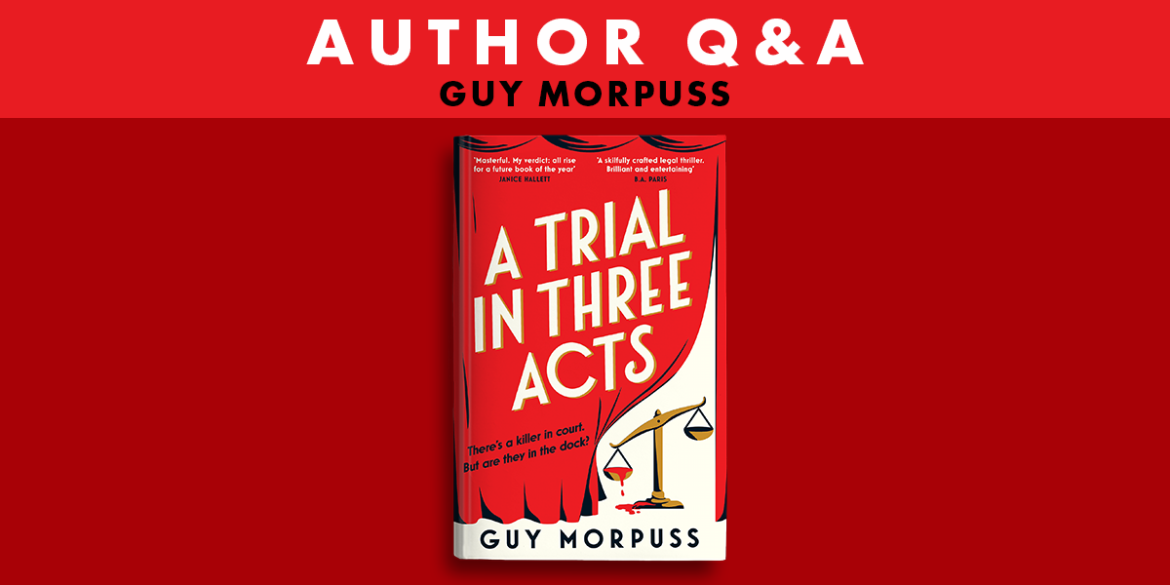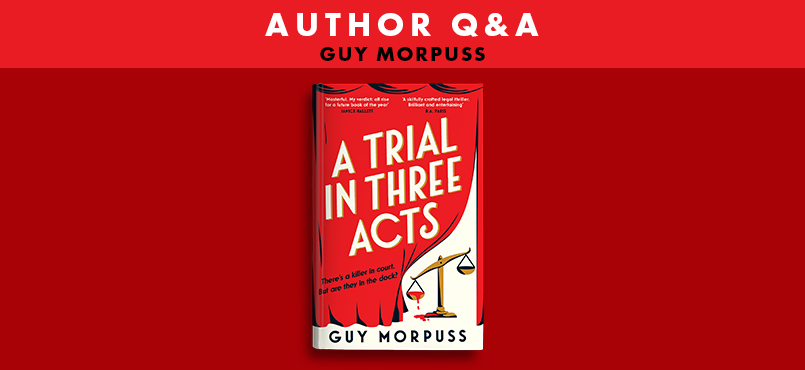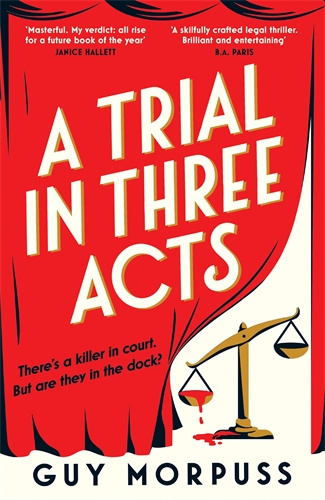05 March 2025
Witty, clever and an utter delight, this mixed-media thriller from barrister Guy Morpuss KC combines nail-biting courtroom drama with a Christie-esque locked room murder mystery.
There’s a killer in the court, but are they in the dock?
‘A delicious mystery’ DAILY MAIL
‘My verdict: all rise for a future book of the year’ JANICE HALLETT
‘If you like your thrillers multi-layered, clever and compelling, this one’s for you‘ JENNIE GODFREY
Much like your lead protagonist, Charles Konig, you were a celebrated barrister and King’s Counsel, before becoming a crime writer. How did your experience and expertise feed into A Trial in Three Acts?
One thing you accumulate over thirty years as a barrister is a large stock of anecdotes. Much of what happens in court is dull (I had two cases in which the judge fell asleep during my submissions), but there are also a lot of fun moments. I have tried to use those to lighten the mood of a book about murder; and to give readers some insight into what really happens in court.
Your previous books, Five Minds and Black Lake Manor, lean on the speculative side of crime fiction, whereas A Trial in Three Acts is set in the here and now. What was it like to step away from speculative fiction? Did you feel restricted by reality?
A Trial in Three Acts was such fun to write that I can’t say that I missed having speculative elements. Being grounded in reality meant that I couldn’t reach for speculative tropes to solve difficult plot points. But in some ways it was easier, because I wasn’t having to invent the world in which the story takes place. Instead I had two real locations filled with their own inherent drama: a two hundred year-old cemetery; and the most famous courtroom in England, the Old Bailey.
You played with form throughout A Trial in Three Acts, including witness statements, extracts from reports and interview transcripts (and more) alongside the main narrative. Was there a particular style you enjoyed writing – the gossipy blog posts, perhaps?
The most fun were definitely the blog posts, as these were the sort of things I would never normally have written. I’ve read and drafted plenty of witness statements and expert reports over the years, so those were pretty easy. They are an essential part of the book, to take the plot forward, but very much written in legalese.
Early readers have been charmed by Konig’s letters to The Times, covering everything from the reliability of witness statements to the Icelandic National Herring Museum. What inspired you to include these letters?
They were inspired by the fact that I occasionally write letters to The Times, some of which get published. I always try to keep them short and amusing, as does Charles Konig. A few of the letters in the book are ones that I have actually had published in The Times. They felt like fun to include, to add some lighter moments. And sometimes they are there to explain a legal point to the reader instead of including an info dump in the main text.
Throughout the book we are presented with scenes from the historical play Daughter of the Revolution – the final act of which was when the brutal murder of Alexandra Dyce occurred. What kind of research did you do to write these scenes?
This was really the starting point for the book, when I stumbled across a footnote telling the story of Lady Virginia Murray’s christening. That led me to Prince Augustus, and his grave in All Souls Cemetery. At first, I did a lot of reading around their story. Then, when I made the link to George Washington, I spent a lot of time researching his history, and looking at original documents such as his diaries – all of which are freely available online. I also did on-the-ground research: dragging my wife round All Souls Cemetery, as well as several sites in Washington DC.



